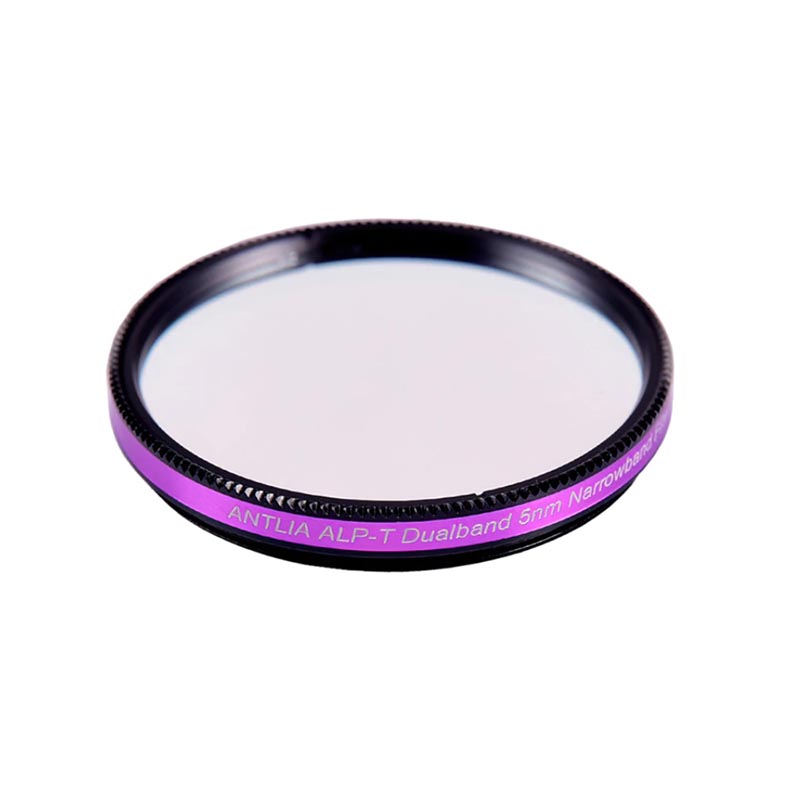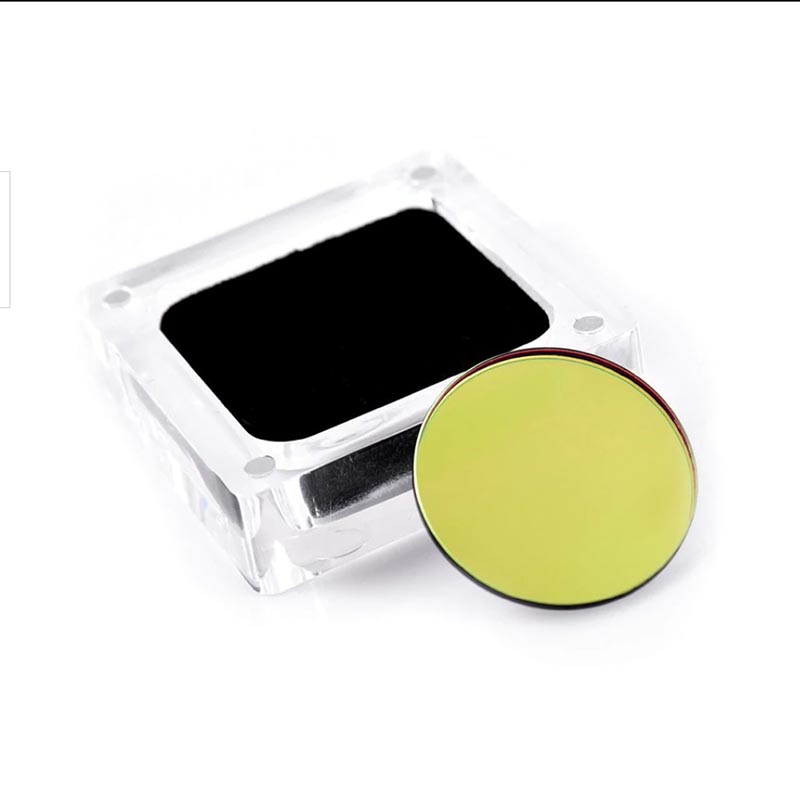The new Antlia ALP-T H-alpha and O-III Dual Band filter is specifically designed for astrophotography with colour DSLR, CMOS or CCD cameras in areas with heavy light pollution. Its two 5nm passing bands are exceptional at isolating nebulae emissions in H-Alpha and OIII. The optical density of 4.5 suppresses unwanted wavelengths from light pollution, moonlight and skyglow, resulting in superior signal-to-noise ratio and better contrast.
The 36mm unmounted variant comes with a handy mounting adapter so you can use it with 2″ filter drawers and accessories!
Like all Antlia filters, the Golden Dual Band filter has excellent halo suppression, making imaging of targets surrounded by bright stars such as the Horsehead Nebula pain-free.
- It blocks the artificial light from mercury vapour lamps, both high and low pressure sodium vapour lights and the unwanted natural light caused by neutral oxygen emission in our atmosphere (i.e. skyglow).
- Maximum transmission of the main nebula emission lines at OIII (500.7nm) is >82% and H-alpha (656.3nm) is >90%. Good signal is still achievable with optics as fast as f/3.
- Two transmission bands with a bandpass of 5nm. OD4.5 @ 300-1100nm.
- Ideal for urban areas with extreme light pollution.
- It incorporates an IR/UV-Cut filter that is necessary in astrophotography, especially for astronomy cameras that are sensitive to the infrared radiation.
- Ultra-thin filter cell to maximise the compatibility with most filter drawers.
- Ideal flat-top and moderate bandpass reduces spectrum down shifts.
- Good performance at focal ratios slower than f/3.
To even further enhance the contrast, and suppress the stray light and internal reflections, Antlia applies edge-blackening coating on each filter. Each filter is individually tested to ensure a high quality standard. The tight tolerance of the filters substrate assure a maximum deviance of ±0.05 from specifications making these filters parfocal.


Reviews
There are no reviews yet.